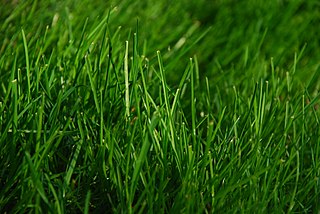Picking Plants That Require Little Maintenance For Your Landscape
Landscaping is enjoyable for your own home or as a side job, but you may be wondering where to start. The most key part of yard landscaping is understanding basic planning techniques. By learning more, you can improve the look of your own home, and perhaps even start your own landscaping business.
Landscaping Directory Stanton CA
While it may be tempting to have a solid cover installed over your out door space, it is a much better idea to install shade bars that are open. Less of the area will be covered, since there is open space, but it will allow more heat to escape so that you will be cooler.
A great landscaping tip that anyone and everyone should implement is to sketch out what they would like their landscaping to look like before starting out on any work. Making a detailed sketch will give you something to refer to while you work and it will also give you an idea of what your project will look like upon completion.
Plant companion plants in your garden. These plants naturally work together to help each other repel pests and diseases. This can help you to have a healthier garden without the use of pesticides. You can find a lot of information on companion plants through a quick Internet search.
Add some paving stones to your landscaping project, to create walkways. This can help to keep people off of your lawn, and it adds beauty to your property. You can line the walkways with some native flowers, to increase the beauty, and further enhance the appearance of your entire property.
Consider using rain barrels to water your yard. Rain barrels are easy to add to any yard, and they serve the purpose of collecting rain water. You can then use that rain water to hydrate your lawn, and plants. This is an easy way to save on the cost of watering plants, and it is an environmentally friendly option too.
Start buying your materials in phases. Few people can afford to buy everything for their projects all at once. By dividing projects into multiple phases, you can pay for what you need as you go. This may save you money, help you keep track of your progress, and let you adjust plans prior to your next phase.
When you first begin growing plants, it may be wise to grow smaller plants. Not only do they require less watering, but they are easier to take care of. Once you get use to these plants, you may think about extending your plants by getting bigger ones, as long as you are prepared to care for them.
If you have a very small house, watch your use of big trees. Big trees can be overwhelming when they are placed in the yard of a very small house. They can distract from the house, and might even make it look smaller than it actually is. Choose smaller varieties instead.
While you might not be able to afford to hire a landscape architect or design professional to develop your landscaping plans. It is well worth the money to pay for an hour-long consultation with one. Doing so can help you refine your ideas and prevent you from making costly mistakes.
Cheaper doesn't always mean better. Generally, common plants and some building materials, like lumber, cost less. Cheaper materials may not have the quality and selection that you can find at many specialized stores. While they may be pricier, these stores tend to include expertise that you won't find in some of the cheaper places, like tips, assistance, deals, and warranties on the particular materials that they specialize in.
When selecting trees for your landscaping project, look for those with rough, glossy or peeling bark. Birch, crepe myrtle, paperbark maple and Japanese cherry trees all have interesting bark that can add texture and visual appeal to your landscape design. Choose trees with bark colors that complement other aspects of your landscape, such as stones or flowers.
Landscape according to physical challenges. If you, or another member of your family has physical challenges, consider this when landscaping your garden. Raised beds can be built allowing ease of access, enabling someone who can't kneel down, or an individual who is in a wheelchair to still be able to work in the garden.
For best results, choose landscaping elements that are primarily native to your climate, soil type and annual rainfall. This will significantly reduce maintenance costs, improve appearance and promote longevity. It also ensures that your lawn and garden complement your home in its natural environment. This is ideal for those who enjoy attracting native wildlife like birds and butterflies.
Take into account a plant's size at maturity. Always take into consideration exactly how big a plant will become when it is fully mature. Don't plant a large tree too close to your property, as the root system could eventually cause a lot of damage, and turn into a very costly mistake in the long run.
While growing exotic plants may bring a good look to your garden, don't use them unless you are ready for all of the maintenance, and care that is involved in that. Planting things that are native to the area require a lot less work, and it lowers the chance that plants will perish.
Now that you've learned more about home landscaping, hopefully, it doesn't seem so complicated. You can do this and all you need to do is to just get started with creating the yard of your dreams. When your neighbors ask who did your landscaping, you'll be able to proudly tell them that you did yourself and they might even want to hire you.

